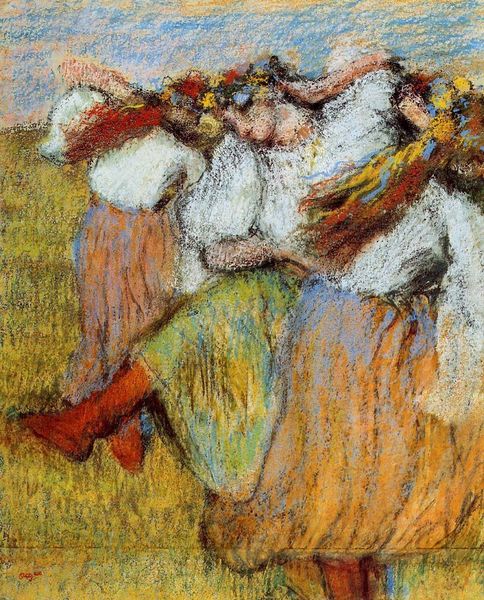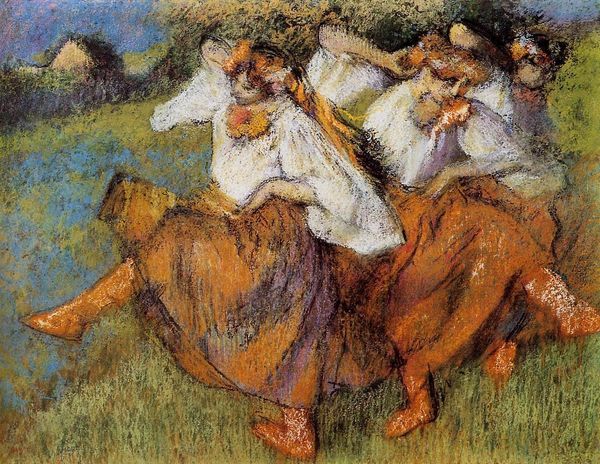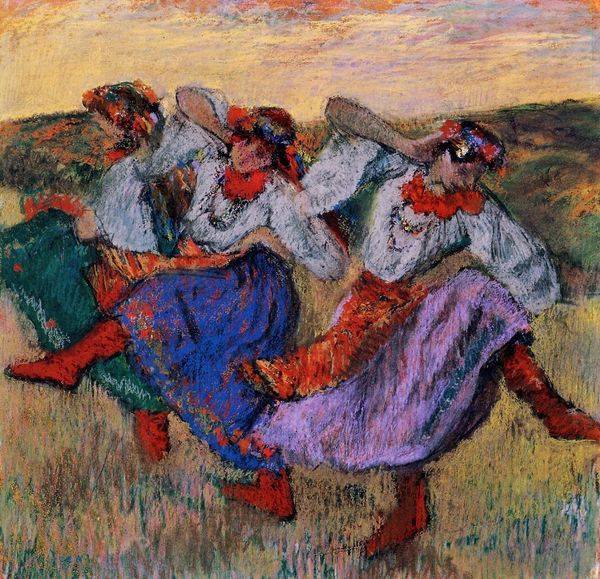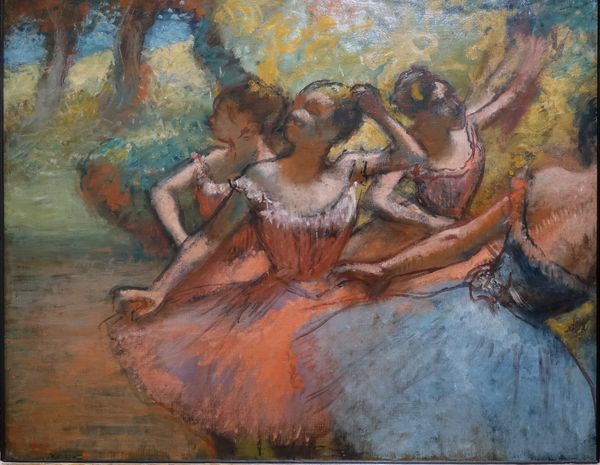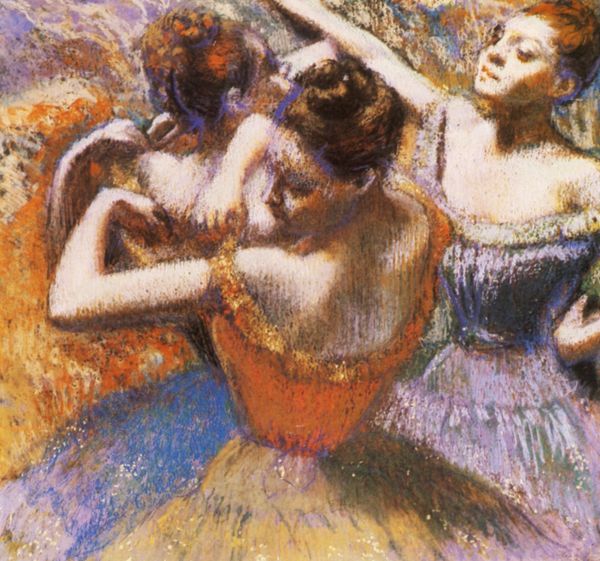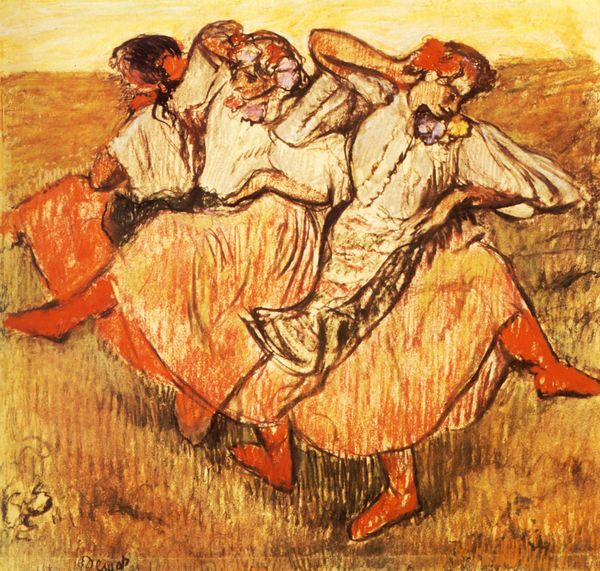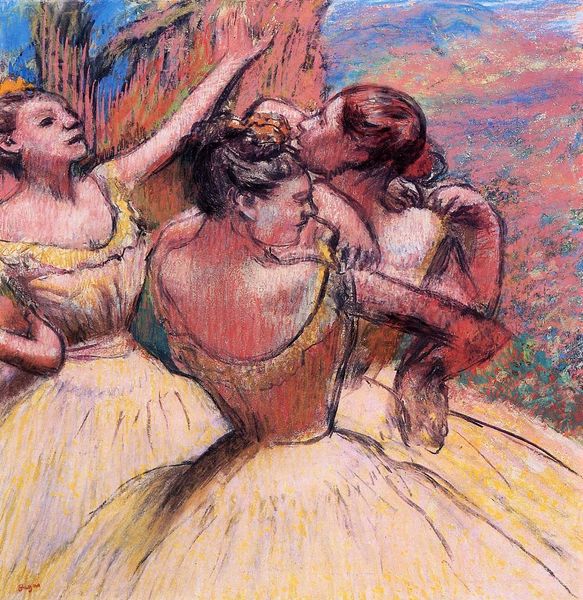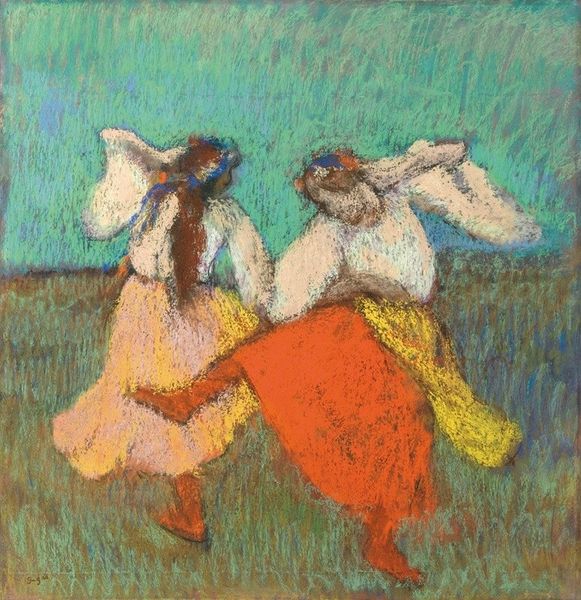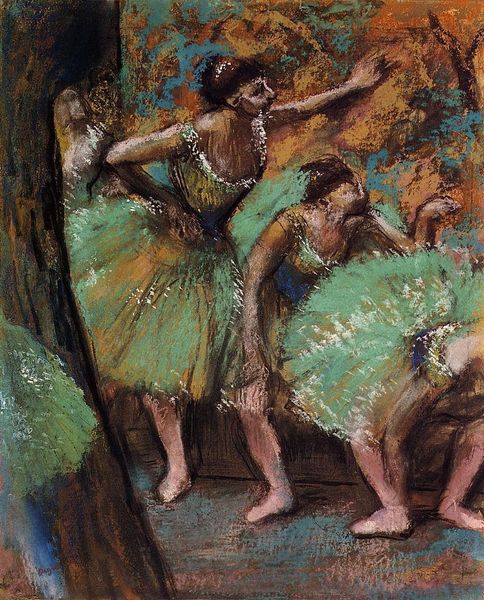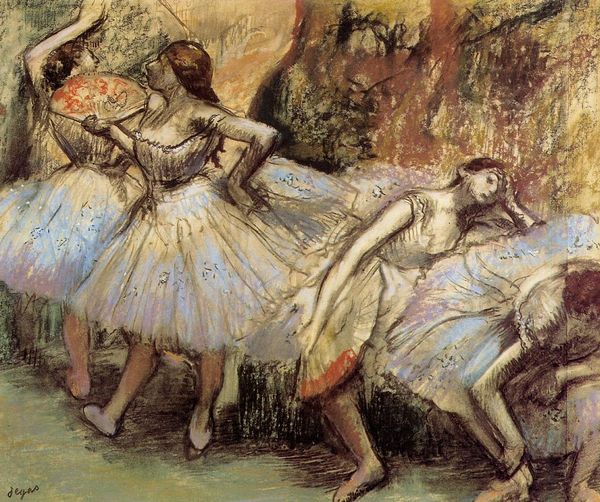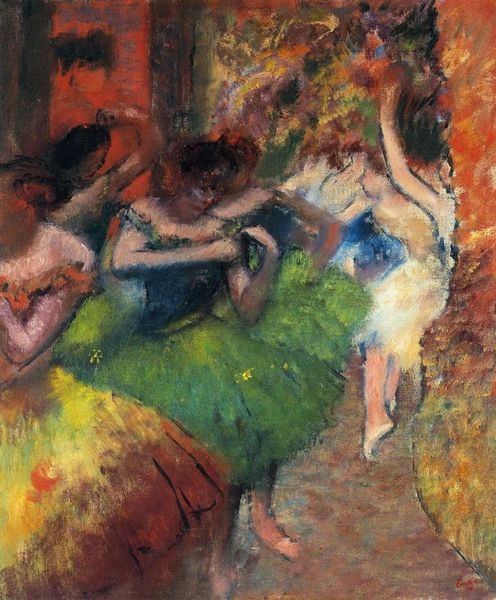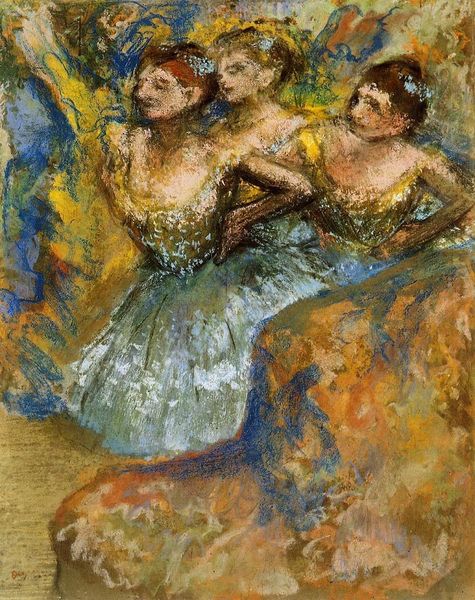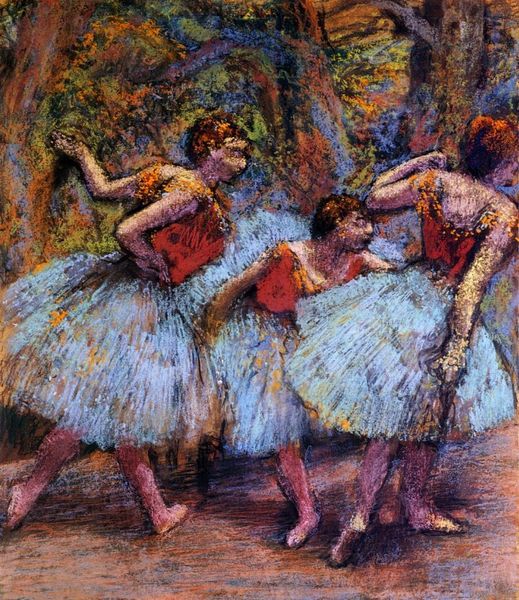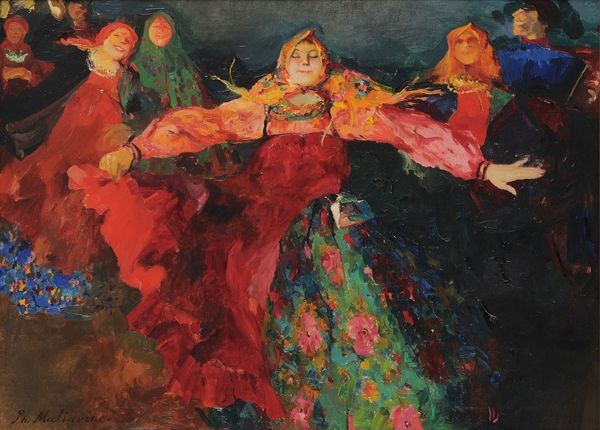
Copyright: Public domain
Curator: Today we’re looking at “Ukrainian Dancers,” a pastel drawing created around 1899 by Edgar Degas. Editor: It's strikingly joyful. The loose strokes of pastel give such a sense of movement. The colors, while muted, still radiate a feeling of warmth. They appear untethered, free, expressing the very sensation of dance. Curator: Interestingly, Degas never visited Ukraine. This drawing was created after, and likely influenced by, a series of performances by Ukrainian dancers in Paris. Think about how performance interacts with the development of new national identities at the turn of the century. Editor: Exactly. Consider how Ukrainian identity has been shaped historically, especially considering repeated attempts to suppress it. Seeing these dancers depicted with such vigor makes you think about the politics inherent in celebrating cultural expression and the reclaiming of identity, and representing women expressing themselves. Curator: Degas often explored themes of labor and performance. In his paintings of ballet dancers, he captured both the grace and the grueling work of their profession. Here, the lens shifts to folk dance. Do you notice similarities in how he captured the movement? Editor: Yes, although with a distinctly different feel. There's a rawness here that's not always present in his ballet scenes. It almost feels more candid. Degas often focused on women; this seems like a conscious capturing of cultural practices that express community through its people, particularly its women. Curator: And what role do institutions play? How has the perception of Ukrainian identity and art within Western institutions been shaped over time, particularly during periods of conflict or political tension? Editor: Good point. Art institutions now have a crucial opportunity to amplify Ukrainian voices and perspectives, but also, must analyze how we exhibit such work. Displaying it with the awareness of its cultural importance, and the political symbolism it carries, prevents its cultural importance being watered down. Curator: It really emphasizes art's powerful agency to act as both an agent of, and also a historical counterpoint to politics and national identity. Editor: Indeed. A reminder that cultural pride and representation are often intrinsically tied to self-determination and resistance. It’s not simply a genre painting; it's an expression of cultural identity against the backdrop of historical oppression.
Comments
No comments
Be the first to comment and join the conversation on the ultimate creative platform.
